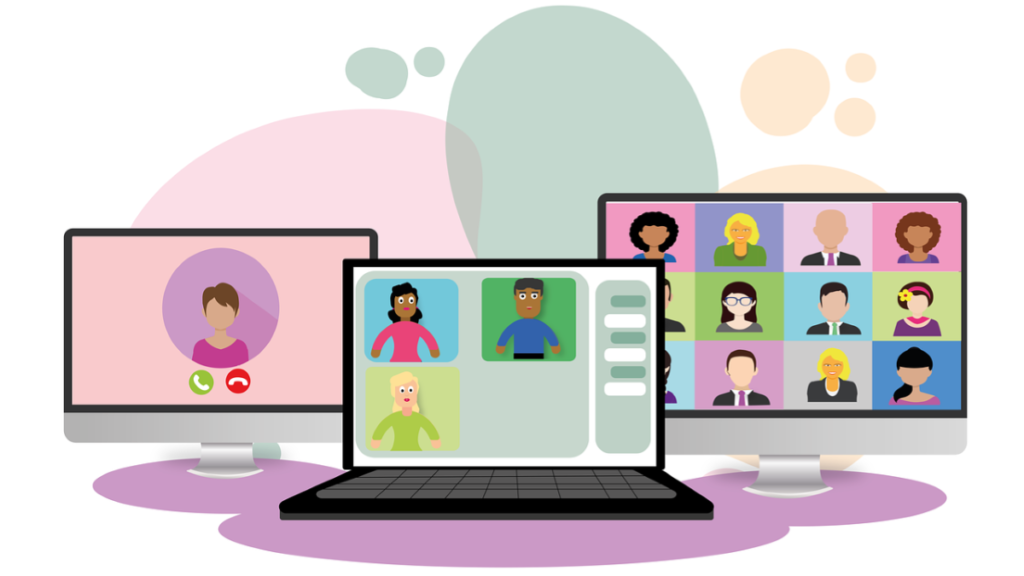Featured image by Alexandra_Koch from Pixabay
Today, online learning platforms are more competitive than ever. Teachers and designers alike strive to keep e-learning lessons relevant, informative, and unique.
And now, more than 6 million Americans are pursuing online education. With the current pandemic, this number is set to increase dramatically.
Since competition is fierce, here are some top-of-the-shelf tips to keep your e-learning lessons engaging so you can attract more students and keep the ones you have.
RELATED ARTICLE: E-LEARNING SIMULATIONS: ARE YOURS ENGAGING ENOUGH?
Design E-Learning Lessons That Target Your Students
Your first and foremost question should be who your learners are. Then, analyze your audience and design e-learning lessons specific to them.
For example, if you are creating lessons for elementary school children, the content, tone, language, and aesthetics should be on these children’s level.
On the other hand, in the case of an audience that is not very tech-savvy, include instructional tags or captions within your videos. You need to help them understand how your platform works.
In other words, both the context and the content of your e-learning lessons matter to your students. LMS consulting can help you create videos that keep your specific audience engaged.
Provide Short Learning Modules
Conventional education made us believe that each lecture should be between 45-55 minutes. But newer studies have found that the average attention span of students is much lower than that. In classes, students stop paying attention after only a few minutes.
Therefore, learning modules need to facilitate learning by enabling students to pause the lecture from time to time. For example, the length of a single lecture is up to 15 minutes on many apps, which is equal to students’ average attention span.
In fact, you need to provide well-written content to get even master’s students to pay attention for 15 continuous minutes.
Use Videos for Better Understanding
Sometimes, description through words is not enough. For better understanding, visual instructions come in handy. Videos can be a great way to make content more understandable. Videos also engage users better.
However, videos need to be concise, as students consider long videos boring. Also, use videos rarely. Too many videos used end-to-end make for monotonous learning situations.
To enhance the quality of the videos you use, add graphics, especially when you’re teaching subjects where charts and diagrams will help to clarify the subject matter.

Tell Learners a Story
E-learning designers are trying to come up with more ideas. They want to do things in unorthodox ways. One such method many designers are using is storytelling. This is because using a story as part of an e-learning lesson makes it more interesting.
To make a story more compelling, introduce a few of the dramatic elements in the lecture. These elements should include an introduction, a crisis, and then a happy ending. This will get your audience more involved in the course.
Be an Enthusiastic Narrator
What sort of voice do you like to hear in a lecture? Are you more attracted to a dull monotone that lacks feeling, or to a voice that is full of amusement and enthusiasm? Of course, the latter is what most students prefer.
A boring voice-over loses listeners’ interest and attention. However, a good narrator brings new dimensions to your lecture. It also helps you to build a good reputation with your audience.
Employ the Active Voice
A great way to pique your audience’s curiosity is to write your lectures using mostly active voice. The active voice suggests an informal and friendly tone. It makes students more attentive and better involves them. It intrigues them to find out more about the e-learning lesson and your subject matter.
The use of the passive voice, on the other hand, while not a deal-breaker, gives the impression that you’re not speaking directly to the student.
Engage Students Immediately with Powerful Headlines
Headlines should engage learners and compel them to check out the content. So don’t be afraid to show emotions in your headlines. Use headlines to give learners a sense of what they can expect by reading or listening to the content.
Your headlines should arouse curiosity. They should inform students how they can benefit from reading the material. Sometimes a headline might even throw light on a problem while also suggesting that the content inside offers a solution.
Make E-Learning Lessons Interactive
One great way to get e-learners to engage in lessons is to provide them with an interactive atmosphere that is similar to that of a classroom. In other words, make it easy for students to discuss with each other and the teacher or professor the problems they have in trying to understand the content.
Perhaps there could be a side panel where they can converse with each other. Provide a way for students to ask whatever questions they have regarding the topic. Also, give students the option to answer other students’ questions if they can offer a solution.
Facilitate Freedom in E-Learning Lessons
To make things more interesting, give students independence. Give them opportunities to navigate their way through a subject in more than one way so they can learn on their own if they choose to. This keeps things more interesting and less monotonous for many students.
Learning can often be frustrating for students. But quite often, it’s more than the subject matter that is the source of frustration. For example, an irreversible audio file can make learning more difficult. Or perhaps a student is ready to move on to the next lecture but is forced to finish the present one first. This sort of inflexibility can make students feel uncomfortable and anxious.
Update and Modify E-Learning Lessons as Needed
Nearly every e-learning network is still a work in progress. In other words, you need to update and modify your website and content regularly based on the interactions you have with learners.
Frequently ask students to give reviews or complete surveys. Then use the information you gain from these sources to adapt your courses and stay ahead of the latest trends.
E-Learning Isn’t All Fun and Games—Or Is It?
Gamification allows you to include game mechanics in learning, making it that much more fun. You can even establish leader boards to compare the scores of different learners. Then award students with badges, levels, and titles according to their scores.
This also helps students in setting goals and striving to reach those goals. These methods are effective, as competition can be a big motivator for some students. Besides, when games are paired with informative content, users are more likely to take their lessons seriously.
Provide for Regular Assessments
You need to provide students with regular assessments of how well they are learning the material. For this purpose, plan quizzes and ask questions between lectures. These strategies will allow both you and your students to know if they are comprehending the lessons.
Keep It Simple Sweetheart
Despite the fact that you must incorporate many different features, it is important to keep lectures simple. Always try to keep in mind that the aim of e-learning lessons is to give valuable information in a fun and engaging way.
